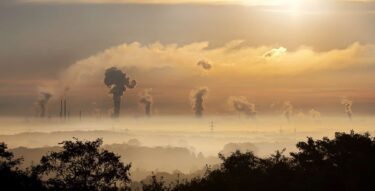Share this article
Here we unpack Safeguard Mechanism 101, everything you need to know for reporting . The reformed Safeguard Mechanism commenced in FY24, with designated large emitters needing to manage any excess emissions scenarios by 1st April 2025 to avoid financial penalties. The reforms have redesigned the original Safeguard Mechanism (SGM) scheme, which was introduced in 2016 following the repeal of Australia’s Carbon Pricing Mechanism. The SGM was originally designed to limit the increase of greenhouse gas emissions at large-emitting facilities, however it imposed no mandatory requirement to reduce emissions, and facility’s baselines were frequently set with enough excess headroom that they could increase their emissions without penalty.
The reformed Safeguard Mechanism was designed to enforce emissions intensity reductions at Safeguard facilities to enable Australia to meet its 2030 emissions reduction target. The SGM has been designed for the FY24 – FY30 period, with reviews phased in every three years to ensure that Australia’s emissions remain on the necessary trajectory to meet its national reduction targets.
If you’re wondering exactly what the SGM means for your business, you’re not alone. That is why we’ve compiled the following Safeguard Mechanism “need-to-knows”. Whether you’re responsible for National Greenhouse Gas and Energy Reporting, need to update your executive board on the financial implications of the SGM for your business, or just want to know more, you’ve come to the right place. This article addresses key questions businesses are asking about how the Safeguard Mechanism will apply to them and provides a summary of the major requirements to get you Safeguard ready.
Safeguard Mechanism 101 Background
Since its inception on 1st July 2016, the Safeguard Mechanism has applied to facilities with direct (scope 1) emissions over 100,000 t CO2-e a year. A facility with scope 1 emissions greater than 100,000 t CO2-e is termed a ‘designated large facility’ and is covered by the National Greenhouse and Energy Reporting (Safeguard Mechanism) Rule 2015 (“Safeguard Rule”).
The Safeguard Mechanism sits within the Australian Government’s broader suite of carbon and energy legislation. The National Greenhouse and Energy Reporting (NGER) scheme provides for the mandatory measurement and reporting of greenhouse gas emissions and energy production and consumption for Australian businesses over the financial year. A facility’s NGER reported emissions form the basis for its classification as a designated large facility for the relevant financial year. The Australian Carbon Credit Unit (ACCU) Scheme, enacted under the Carbon Farming Initiative (CFI) legislative hierarchy, allows for the generation of carbon credits by undertaking projects which reduce emissions or store carbon through sequestration.
ACCUs can be sold on the secondary market or sold directly to the Federal Government through a carbon abatement contract. The Safeguard Mechanism interacts with the Australian carbon market by introducing a new credit, the Safeguard Mechanism Credit (SMC), which is generated by SGM facilities that reduce their emissions below their baseline in a given financial year. SGM facilities that exceed their baseline must acquire and surrender either ACCUs or SMCs to the amount equal to which their emissions are above their baseline.
Will the Safeguard Mechanism affect me?
If your company has operational control of a designated large facility, they are considered a “responsible emitter” under the Safeguard Mechanism. Designated large facilities are those with scope 1 emissions greater than 100,000 tCO2-e per their annual NGER report. As a responsible emitter under the Safeguard Mechanism, you will be required to keep your facility’s emissions equal to or below baseline levels in order to avoid financial penalties.
What do I have to do to comply with the Safeguard Mechanism?
The Safeguard Mechanism requires you to keep net emissions, which are actual emissions less offsets sold to the Government or surrendered, below baseline levels. Your baseline is calculated on an emissions intensity basis, meaning it will ‘float’ with the annual production quantity of each major production output of your facility, known as a ‘production variable’. The baseline intensity of each production variable will change every year, shifting from your historical emissions intensity to converge on the industry average emissions intensity for that product, and subject to an annual decline rate to encourage decarbonisation.
If you exceed your baseline, you must manage your excess emissions prior to 1st April following the end of the financial year. The Safeguard Mechanism includes a number of options to manage facilities in an excess emissions situation for a financial year. These are briefly outlined below.
Surrender ACCUs or SMCs – Facilities can manage an excess emissions position by surrendering an equal amount of Australian Carbon Credit Units (ACCUs) or Safeguard Mechanism Credits (SMCs). SMCs can be purchased from other Safeguard facilities on the secondary market or can be generated and banked to manage future liability. ACCUs can also be purchased off the secondary market, or generated through an eligible offsets project under the Federal Government’s ACCU Scheme. International carbon credits can not be used to manage an excess emissions position under the Safeguard Mechanism.
Multi‑year monitoring – A Multi-year monitoring period (MYMP) allows your Facility to exceed its baseline in one year, so long as total emissions over the multi-year period are below the total baseline emissions. An MYMP can extend from two to five years, giving a facility more time to implement decarbonisation projects to decrease their emissions below their baseline. A facility must have a plan to reduce their emissions over the proposed duration of the MYMP in order to apply, such that they reasonably expect to reduce emissions below the extended baseline by the end of the period.
Trade-exposed baseline-adjusted facilities – Trade-exposed, baseline-adjusted (TEBA) facilities are eligible for reduced annual decline rates from the default 4.9%. To be eligible for TEBA status, a facility’s primary production variable must be considered a trade-exposed production variable, as listed in Schedule 2 of the SGM Rule. Additionally, the facility must face an excess emissions situation in the first year of their TEBA application, and the cost impact of this exceedance must meet a designated threshold.
Borrowing – a facility can apply to borrow from its baseline in the following year. You can borrow up to 10% of your next year’s baseline, which will be reduced by the corresponding amount, plus interest (2% in FY25 and FY26, 10% from FY27 onwards).
Exceptional circumstance exemption – Facilities can apply for an exemption for managing an excess emissions position if their baseline exceedance occurred as a direct result of either a natural disaster or criminal activity.
What happens if I fail to meet my Safeguard Mechanism obligations?
Taking into account the options for compliance listed above, if your company fails to keep an excess emissions position by 1st April following the relevant financial year, the Clean Energy Regulator may apply a range of discretionary, graduated enforcement options, including civil penalties.
How will my baseline be measured?
The reformed Safeguard Mechanism provides a single approach for calculating your SGM baseline. The baseline is a function of the following key inputs:
- Production – Annual production of each production variable produced in the financial year in accordance with Schedule 1 of the Safeguard Rule.
- Site-specific emissions intensity – If you produced a production variable at any time between FY17 – FY22, you should apply for a site-specific emissions intensity for this production variable through an Emissions Intensity Determination.
- Default emissions intensity – The default, or industry-average, emissions intensity for each production variable, as published in Schedule 1 of the Safeguard Mechanism Rule.
- Best-practice emissions intensity – If you are a new facility, are producing a new production variable or did not submit an Emissions-Intensity Determination application for a site-specific emissions intensity, you will be subject to the best practice emissions intensity for the production variable as published in Schedule 1 of the Safeguard Mechanism Rule.
- Annual decline rate – The default annual decline rate is 4.9%. If you are a TEBA facility you may be eligible for a decreased decline rate.
What if my emissions increase because production increases, do I have to pay?
Because the SGM baseline is calculated on an emissions intensity basis, your baseline will float with your annual production. As a result, understanding changes in your emissions intensity will provide greater insight into your position under the Safeguard Mechanism.
What if we have a new facility?
Under the reformed Safeguard Mechanism, new facilities, or existing facilities producing new products, are held to the best-practice emissions intensity for these products. This requirement is designed to ensure the adoption of efficient technologies by new facilities. All new gas fields supplying LNG will be given a zero baseline allocation.
What if something outside our control impacts our emissions?
If your facility has experienced exceptional circumstances, such as a natural disaster or criminal activity which has directly caused increased emissions, you may be eligible for an exemption. If approved, the facility will be exempt from its safeguard obligation for a defined period of time. In assessing your application for exemption, the Regulator will consider whether reasonable steps were taken to mitigate the risk of excess emissions occurring from the exceptional event.
However, exemptions do not apply to circumstances reflecting normal market dynamics which may affect emissions variations, such as price, production inputs and outputs or maintenance.
How is the Electricity Sector treated under the Safeguard Mechanism?
A sectoral-baseline, equal to 198 million tonnes CO2-e, applies to all grid-connected electricity generators. This baseline is established based on the total scope 1 emissions from grid-connected generators from the 2009-10 to 2013-14 financial years. Individual baselines for activities not directly related to electricity generation will apply if these activities collectively exceed the 100 ktCO2e SGM threshold.
Do I have to register for the Safeguard Mechanism?
If you are already reporting your annual emissions under the NGER scheme, you do not need to register again under the Safeguard Mechanism.
If you are a responsible emitter with operational control of a Safeguard facility, and are not already registered under the NGER Act, you need to register in line with section 15B of the NGER Act.
https://www.cleanenergyregulator.gov.au/NGER/Reporting-cycle/Register-and-deregiste
Do I have to report under the Safeguard Mechanism?
Companies already submitting reports under sections 19, 22G and 22X of the NGER Act will generally have their reporting requirements covered by the NGER Regulations, and will not have additional reporting requirements (See Safeguard Rule, Part 5). Some responsible emitters who are not controlling corporations under NGERs, such as trusts or non-constitutional corporations, will have additional reporting obligations under section 22XB of the NGER Act.
It is advisable to review your reporting requirements to ensure ongoing compliance under the Safeguard Mechanism. As always, it is important that records are kept to monitor compliance, and kept in a way that is easily and quickly accessible for inspection and audit.
Will I need an audit?
Under the reformed Safeguard Mechanism, audits are mandatory in the following circumstances:
- When applying for an Emissions Intensity Determination
- When applying for trade-exposed baseline-adjusted (TEBA) status
- When your total covered emissions exceed 1 MtCO2e in a given financial year
Can I generate Australian Carbon Credit Units (ACCUs) at my facility if it is covered by the Safeguard Mechanism?
Changes to the Carbon Farming Initiative in the context of the reformed Safeguard Mechanism have excluded new projects which abate covered emissions at a Safeguard facility from being declared eligible offsets projects under the ACCU Scheme. This is to avoid double counting, as the reduction of covered emissions at a Safeguard facility can enable the generation of Safeguard Mechanism Credits if a facility’s emissions decrease below their baseline,
Safeguard facilities can still generate ACCUs through the development of an eligible offsets project under one of the carbon sequestration methods of the ACCU Scheme, including the Agriculture and Vegetation methods.
I operate a waste management facility, are legacy and non-legacy waste measured separately?
Yes, landfill baselines are calculated using non-legacy emissions, a default efficiency rate for methane capture, the near-surface methane oxidation factor per the NGER scheme and the Safeguard baseline decline rate.
Is the Safeguard Mechanism likely to change?
The reformed Safeguard Mechanism will be reviewed in 2026-27 to ensure the policy is appropriately calibrated against Australia’s emission reduction targets. This review will consider the extent to which Safeguard facilities are undertaking decarbonisation activities, accessing excess emissions management options such as TEBA status and multi-year monitoring periods, and the costs and availability of carbon credits. Additionally, the review will consider Australia’s new emissions reduction commitments under its 2025 Nationally Determined Contribution under the Paris Agreement, alongside the required trajectory to net zero emissions.
Have more questions about Safeguard Mechanism 101?
Our team of experts have supported many of Australia’s largest emitters with audit, strategic advisory and ACCU procurement for the Safeguard Mechanism. They have an in-depth knowledge of the Safeguard Mechanism Act and can help you navigate the Safeguard legislation and explore opportunities that exist to not only comply but to drive innovation and abatement at scale.
Learn about how we helped Orica bring to life one of the largest abatement projects in Australian History and reach out to us if you need advice.


